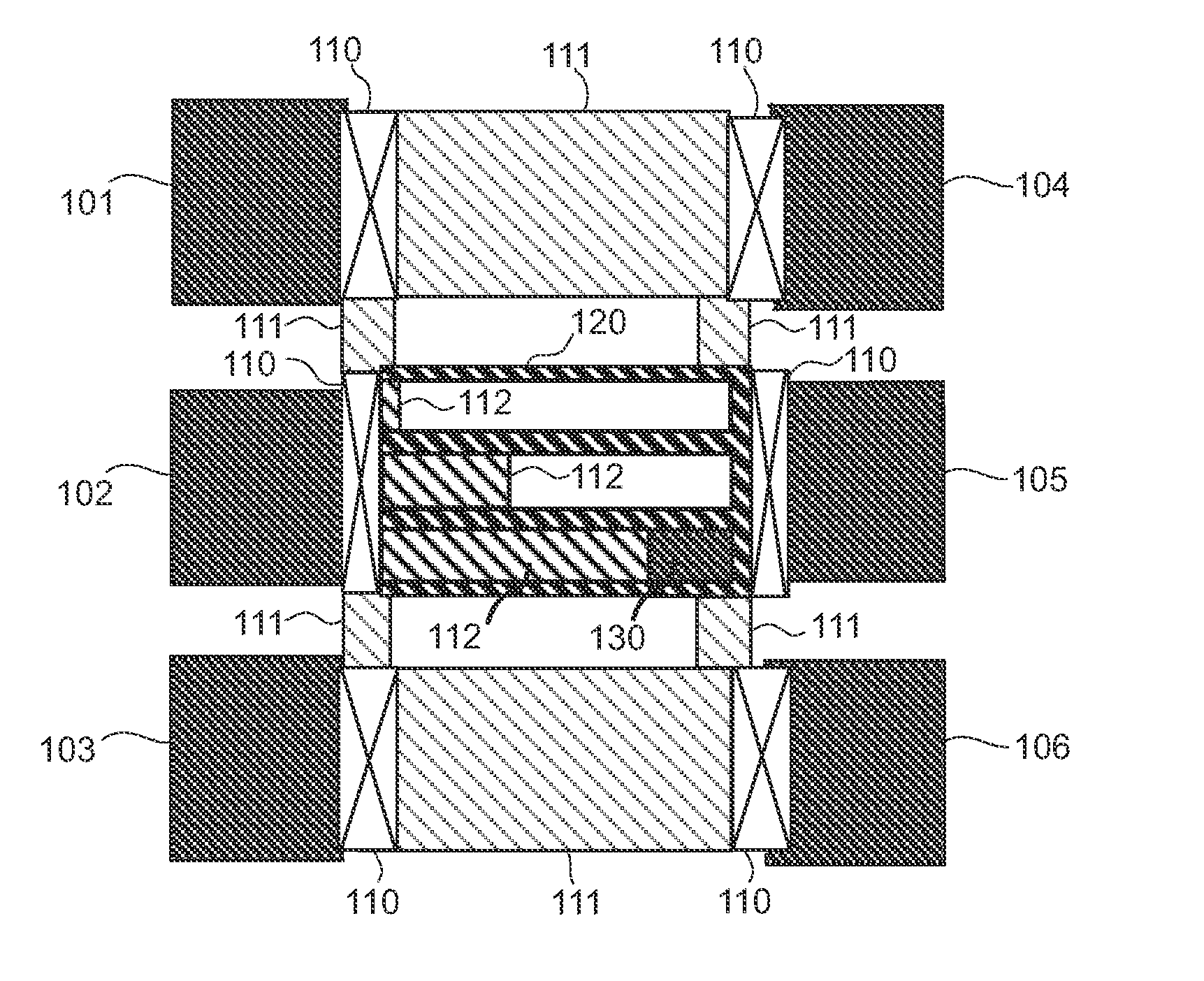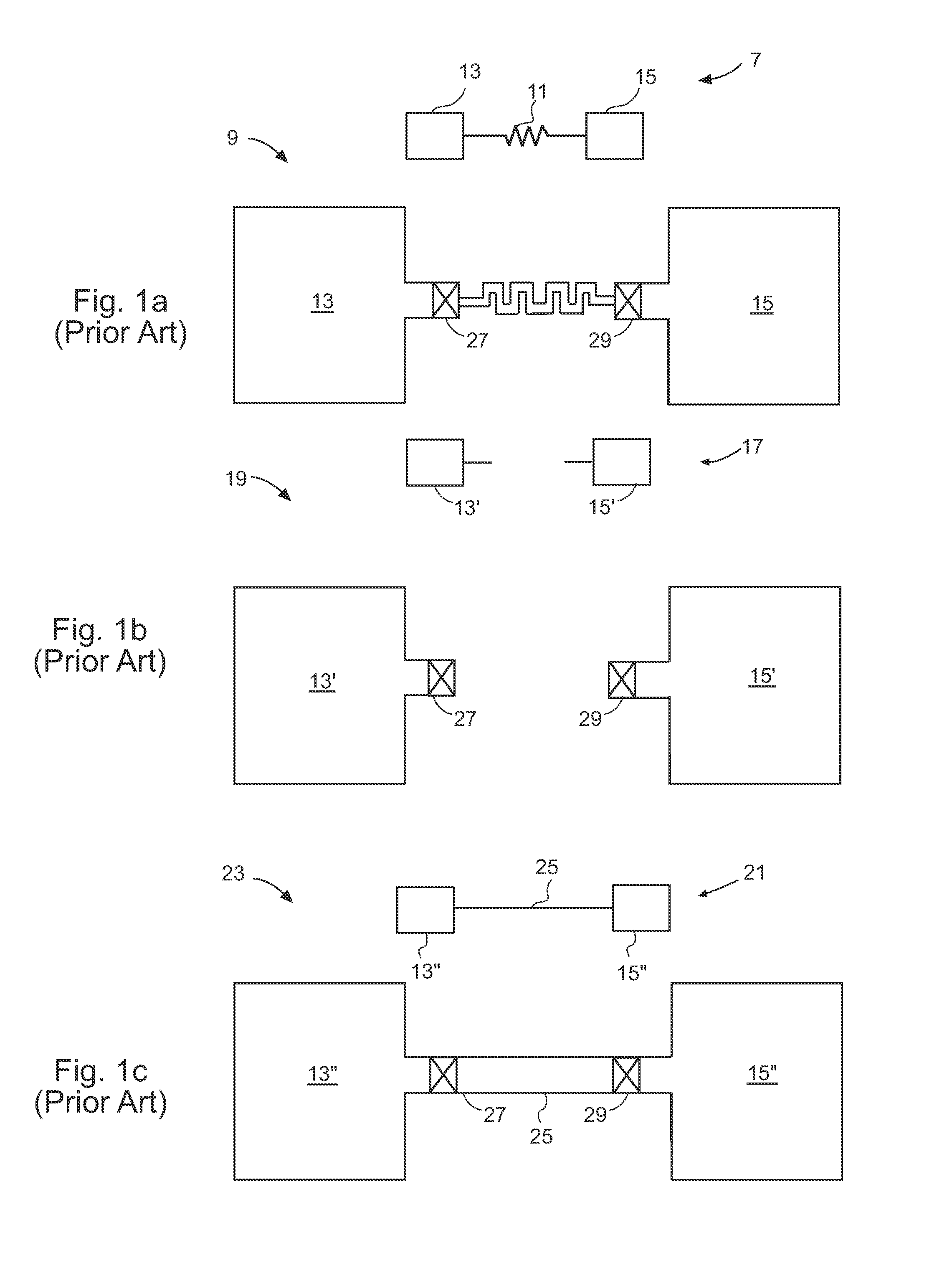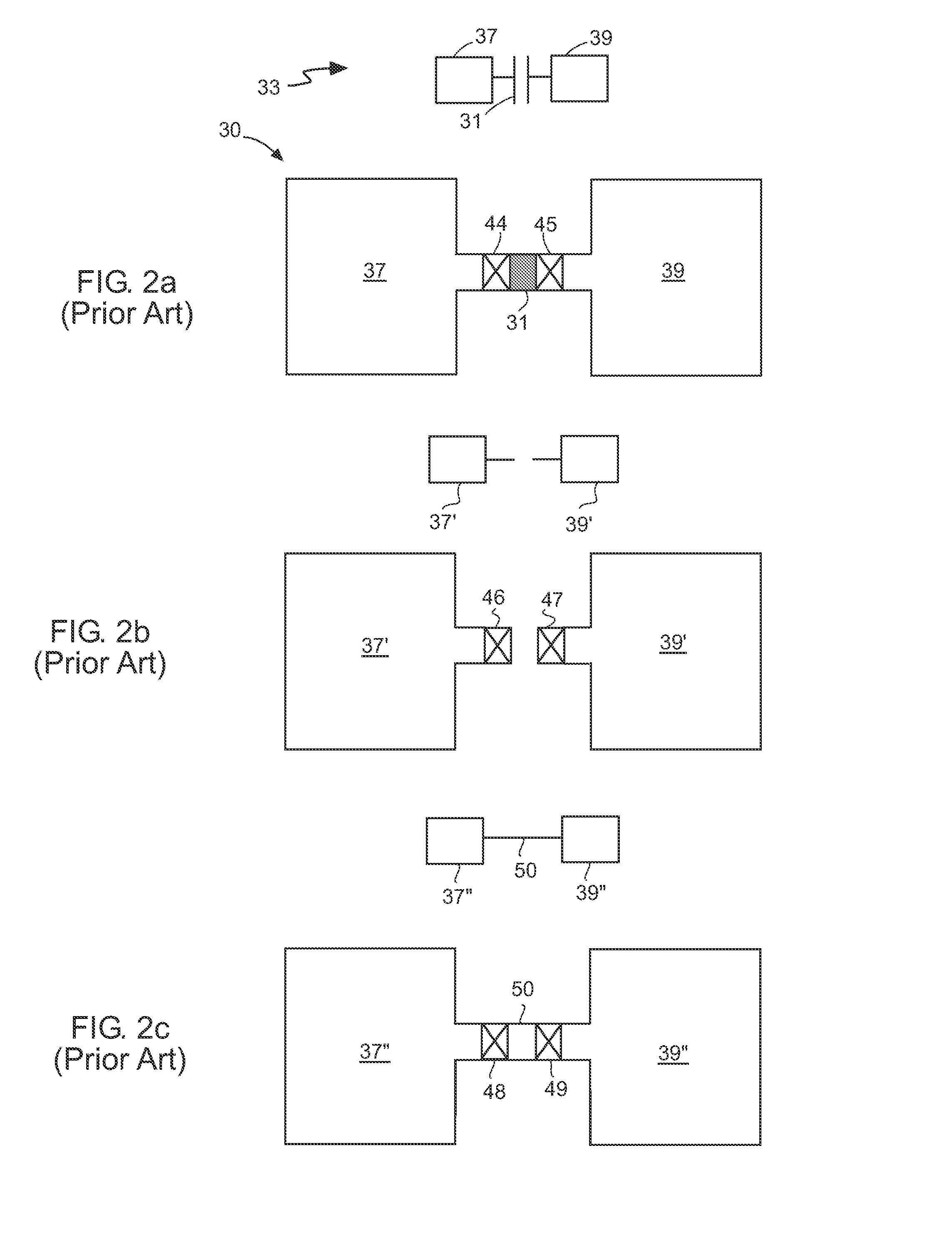Universal padset concept for high-frequency probing
- Summary
- Abstract
- Description
- Claims
- Application Information
AI Technical Summary
Benefits of technology
Problems solved by technology
Method used
Image
Examples
Embodiment Construction
[0055]With reference to FIG. 10, the present embodiment establishes a universal pad set whose wiring pattern, i.e. routing pattern, to each GSG pad set is such that more than one size, or type, of DUT can be wired to existing GSG pad sets, but only one open-circuit and short-circuit test pad pattern and VNA calibration is required to de-embed the test-bed's parasitics from all the DUTs for which the test GSG pad set is suitable. For example, the test pad configuration of FIG. 10 is shown suitable for multiple sizes of capacitors, or simple resistors (although capacitors will be used in the present exemplary discussion). That is, two GSG pad sets are shown for accessing both end nodes of a capacitor, although no capacitor is shown in FIG. 10. Pads 101–103 constitute a first GSG pad set, and pads 104–106 constitute a second GSG pad set, and together, pads 101–106 constitute one universal pad set. Pads 101, 103, 104, and 106 are ground pads coupled together, and pads 102 and 105 are si...
PUM
 Login to View More
Login to View More Abstract
Description
Claims
Application Information
 Login to View More
Login to View More - R&D
- Intellectual Property
- Life Sciences
- Materials
- Tech Scout
- Unparalleled Data Quality
- Higher Quality Content
- 60% Fewer Hallucinations
Browse by: Latest US Patents, China's latest patents, Technical Efficacy Thesaurus, Application Domain, Technology Topic, Popular Technical Reports.
© 2025 PatSnap. All rights reserved.Legal|Privacy policy|Modern Slavery Act Transparency Statement|Sitemap|About US| Contact US: help@patsnap.com



